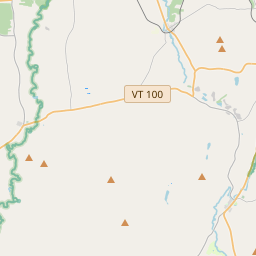Early 20th Century, Newport / Newport au début du 20e siècle
Historical marker location:
Newport, Vermont
( Marker is at the intersection of Main Street (U.S. 5) and Field Avenue, on the right when traveling west on Main Street.)







© OpenStreetMap contributors
More history nearby
Vermont was the first state to legalize civil unions for same-sex couples: In 2000, Vermont became the first state in the United States to legalize civil unions for same-sex couples. This was a significant milestone in the fight for LGBTQ+ rights in the country.
About Orleans County
Orleans County Timeline
Orleans County, Vermont, has a rich history dating back to the native Abenaki people who were the original inhabitants of the region. In the 18th century, European settlers began to arrive, attracted by the fertile land and abundant natural resources. The area was officially established as Orleans County in 1792, named after the French city of Orléans, to honor France's support during the American Revolution.
The county played a significant role in the logging industry during the 19th century, with its vast forests providing valuable timber for construction and trade. The arrival of the railroad in the mid-1800s further stimulated economic growth, as it facilitated the transportation of lumber and other goods. Orleans County also became known for its agricultural productivity, with many farmers cultivating crops such as potatoes, dairy products, and maple syrup.
During the early 20th century, the county saw a decline in logging due to the depletion of natural resources and competition from other regions. However, it experienced a revival in the tourism industry, capitalizing on its scenic beauty and outdoor recreational opportunities. Lake Willoughby, one of Vermont's most beloved lakes, and its surrounding natural attractions, including hiking trails, fishing spots, and winter activities, have attracted visitors from across the country.
Today, Orleans County continues to be deeply rooted in its agricultural heritage while embracing the economic opportunities brought by tourism and outdoor activities. With its charming small towns, beautiful landscapes, and close-knit communities, the county attracts both residents and visitors who appreciate its historical significance, natural beauty, and rural way of life.
The county played a significant role in the logging industry during the 19th century, with its vast forests providing valuable timber for construction and trade. The arrival of the railroad in the mid-1800s further stimulated economic growth, as it facilitated the transportation of lumber and other goods. Orleans County also became known for its agricultural productivity, with many farmers cultivating crops such as potatoes, dairy products, and maple syrup.
During the early 20th century, the county saw a decline in logging due to the depletion of natural resources and competition from other regions. However, it experienced a revival in the tourism industry, capitalizing on its scenic beauty and outdoor recreational opportunities. Lake Willoughby, one of Vermont's most beloved lakes, and its surrounding natural attractions, including hiking trails, fishing spots, and winter activities, have attracted visitors from across the country.
Today, Orleans County continues to be deeply rooted in its agricultural heritage while embracing the economic opportunities brought by tourism and outdoor activities. With its charming small towns, beautiful landscapes, and close-knit communities, the county attracts both residents and visitors who appreciate its historical significance, natural beauty, and rural way of life.
Orleans County Timeline
This timeline provides a glimpse into the major events and milestones that have shaped the history of Orleans County, Vermont.
- 1761 - Orleans County is granted by Benning Wentworth, Governor of New Hampshire, to settlers from Connecticut and Massachusetts.
- 1791 - Vermont becomes the 14th state.
- 1792 - Orleans County is officially recognized as a county within Vermont.
- 1799 - Barton is settled by Ebenezer and Jeduthan Barton.
- 1810 - Craftsbury is incorporated as a town.
- 1818 - Troy is established as a separate town from Newport.
- 1840 - Irasburg is incorporated as a town.
- 1860 - Coventry is incorporated as a town.
- 1866 - The Vermont legislature authorizes the formation of a town from parts of Charleston, Coventry, and Irasburg, giving birth to Orleans.
- 1881 - The National Standard Paper Mill is established in Island Pond.
- 1913 - Lowell is incorporated as a town.
- 1921 - Jay is incorporated as a town.
- 1959 - The Interstate 91 highway is completed, connecting the county to the rest of Vermont and New Hampshire.
- 1982 - The Jay Peak Resort opens, becoming a popular tourist destination.
- 1995 - The Missisquoi Valley Rail Trail is established, offering recreational opportunities to residents and visitors.